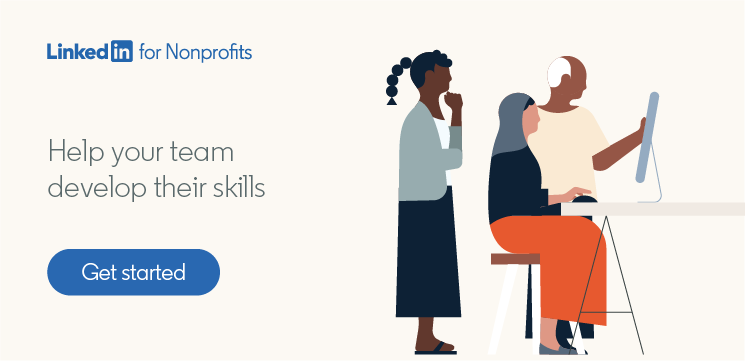
Conserving Your Energy as a Nonprofit Professional
While burnout is a problem across virtually every industry, nonprofit professionals can be hit especially hard. Between compassion fatigue and the vicarious trauma that often results from being exposed to the suffering of others, it’s not uncommon for employees and leaders alike to find themselves running on empty—impacting both their work and their well-being.
While it may feel like there are never enough hours in the day to get through all the work that needs to be done, taking a proactive approach to energy management can help you bring your best self to every task. Try these three steps to get started.
1. Audit yourself
In the LinkedIn Learning course “Achieving More through Smart Energy Management,” author and former sports agent Molly Fletcher recommends giving yourself an “energy audit.” This is essentially a way to check in with yourself and figure out what works and doesn’t work for you when it comes to managing your energy levels.
Start by considering the activities that seem to fill up your energy stores when you’re feeling depleted. This could be anything from taking a brisk walk during your lunch break to working as part of a group—anything that gives you a boost, big or small. And it doesn’t just have to be things that take place during the workday. If quality time with your family in the evenings makes you feel good and gives you energy, make a note of it for later.
Next, think about what activities have no effect, positive or negative, on your energy levels. These tend to be the tasks that we think of as necessary but uneventful parts of our work lives, like replying to emails.
Lastly, take stock of the tasks that you find draining. For some nonprofit professionals, this might be tedious administrative activities or grant proposals that involve a lot of writing. For others, it might be long phone calls or meetings with a lot of people present. Everyone is unique, so don’t worry if you feel exhausted performing tasks that other team members love—it’s important to find the right balance for you.
2. Be intentional
After completing your audit, you’ll have a firmer understanding of how different activities affect your energy levels. This allows you to be intentional about doing more of the things that boost your energy and less of the things that drain it.
Often, the activities that give us energy are the first things we sacrifice when we’re busy. We skip the lunchtime walk to get more work done or stay late and cut into our family time. Unfortunately, this approach is counterproductive, making it difficult to restore necessary energy and hastening burnout.
To protect your energy boosters, put them on your calendar. Blocking off time for that energy-restoring walk is a way to signal that it’s important—to yourself and those around you. Before long, it will become part of your routine, but sometimes you need the little push of a notification to remind you it’s time to re-energize.
As for the tasks that drain you, it’s not always possible to eliminate them entirely. But with additional clarity into the effect they’re having on your overall energy, you can be more disciplined and confident about saying “no” to the things you can control.
3. Avoid reaching empty
Timing is everything—especially when it comes to those energy-draining tasks. When you know you’ve got to do something that’s going to deplete your energy, look to schedule an energy-boosting activity immediately beforehand to avoid going in with an empty tank.
While powering through tasks you don’t want to do might seem like a good idea in the moment, it can ultimately leave you running on fumes. The lower your energy levels get, the harder it’s going to be to get yourself back to your best, most energized self.
So before you head into that hour-long conference call that you know is going to make you feel tired, take some time for yourself and read a book on a park bench. Or, before you have to put your head down and work on your organization’s tax return, have a virtual coffee with a coworker who always makes you laugh. Lift yourself up in advance and you won’t feel so drained when the dreaded task is done.
If you’re looking for ways to support your nonprofit team’s whole-person well-being, LinkedIn Learning can help. You’ll find thousands of expert-led courses covering everything from mindfulness and stress reduction to skills that can support their professional development. Contact our team to learn more.
This post was inspired by the LinkedIn Learning Blog article “How to Manage Your Energy to Do Your Best Work and Feel Fulfilled,” authored by Rachel Parnes.

